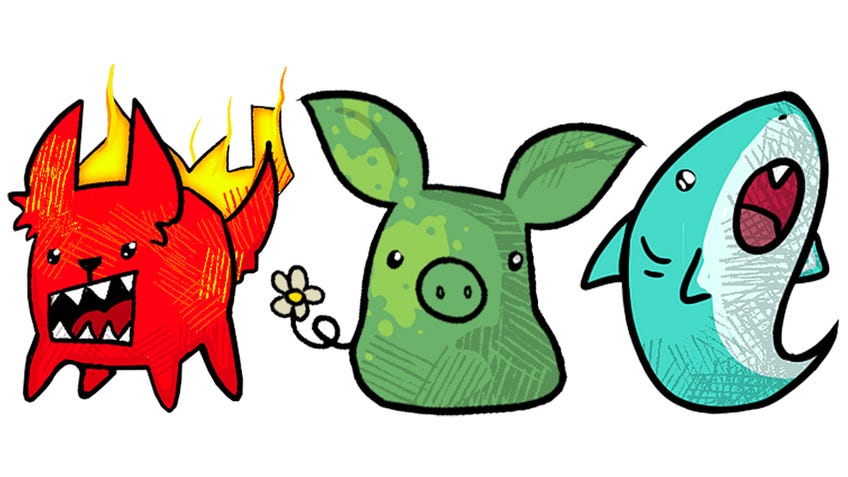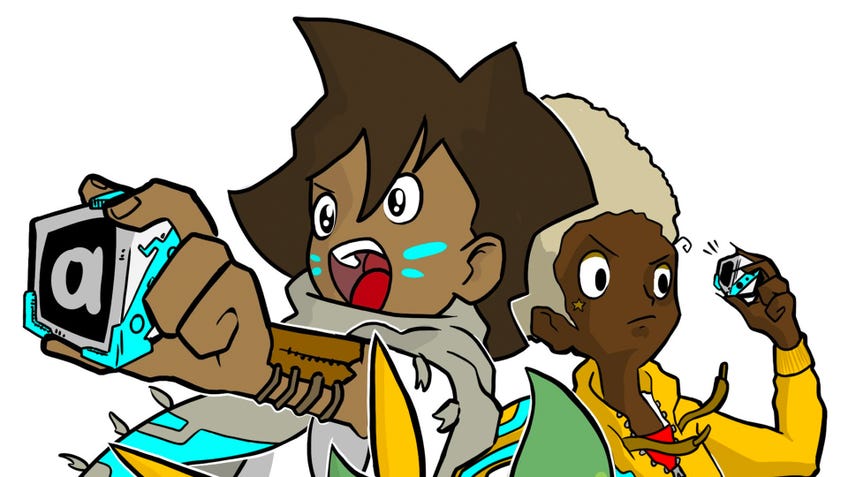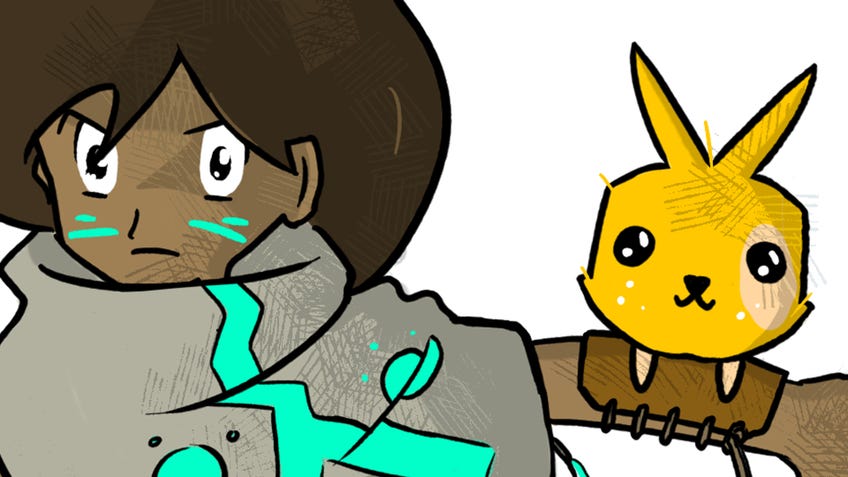Animon Story is shaping up to be the perfect tabletop RPG for Pokémon and Digimon fans
Roll for PokéDEX.
Animon Story describes itself as a "game about kids and their monster friends evolving to overcome adversity". If you're already thinking about Pokémon or Digimon, then you're on the right track. While some fans over the years have homebrewed 'mon-style battle mechanics for other tabletop RPGs, Animon Story seeks to tell the kinds of stories you might get in an episode of Pokémon or Digimon, focused on a world of sentient monsters and the ways in which they exist.
In Animon Story, players create a Kid and a monster, called an Animon, and set out with their friends on an adventure, rolling a pool of d6 based on their stats to overcome the challenges they meet along the way. Kids fall into one of ten ‘archetypes’ that define their personality and place within the group; examples include the Bookworm, the Jock or the Free Spirit, with each archetype receiving additional dice in their pool when attempting different types of actions. Aminon, meanwhile, are intelligent, sentient beings that are characters in and of themselves. “I wanted to tell stories focused on a group of kids with partners unique to them [that were] narratively used as a reflection of the characters,” writer and creator Zak Barouh tells me.

The bonds between Kids and Animon are powerful, allowing Animon to ‘evolve’ into more powerful forms. The real character customisation comes from creating your Animon partner and their successive evolutions. Whilst there will be examples of Animon NPCs that players can pick up and play with, the game encourages players to let their creativity run wild in creating their own Animon. Each Animon has a classification (eg. Machine, Beast, Insect…) and an element (eg. Electric, Light, Nature…) and these can be combined in numerous ways to describe any kind of creature players can come up with. Classifications give bonuses to interacting with wild Animon of the same group, while elements work much like 'types' in Pokémon, with matchups making particular elements strong or weak against others. As well as classifications and elements, players can create signature attacks to really make their partner stand out in combat.
I wanted to tell stories focused on a group of kids with partners unique to them [that were] narratively used as a reflection of the characters.
I love the idea of randomly picking out a classification and an element and trying to come up with a character that fits: dark celestial, fire insect or mirage avian? The creative space for coming up with unique creatures feels near-endless, and this is taken further by qualities. These are traits that describe an Animon’s physical characteristics - such as flight, flaming body or a tough carapace - and provide bonuses to relevant rolls. While the game will include a list of potential qualities, players are encouraged to work with their GM to expand this list with their own unique qualities. By doing this, the game ensures that every Animon will be special.
As well as customising their Animon, the game allows the GM and players to collaboratively customise the world in which their story takes place. "Originally the game had more of a fixed setting but, as time went on, I kept thinking about things people might want to change to suit their story and decided to remove these limitations," says Barouh.
I kept thinking about things people might want to change to suit their story and decided to remove these limitations.
Rather than a fixed setting, Animon Story will provide a set of questions that the GM and players can sit down and answer together in a Session Zero. This includes questions like 'Where do Animon originate from?' and 'How commonplace are Animon in this world'? Barouh reveals one example during playtesting took inspiration from Yu-Gi-Oh!, where the players decided that Animon in their world were linked to in-game trading cards.
I am always a fan of giving players tools to tailor the world to their liking, and this system does just that, allowing groups to mimic and take inspiration from all their favourite worlds in the way that best fits the story they want to tell. Whether that’s a story where Animon form a key part of society and trainers roam the land doing battle like Pokémon, or one where the kids have a unique bond of friendship with a group of extra-dimensional beings, as in Digimon, this system has you covered.

One of the most unique aspects of Animon Story is the idea of playing two characters. In the vast majority of RPGs, players create and control a single player character. Sometimes they might have a pet that they command, but the concept of playing two intelligent, sentient characters is rare. The general rule in Animon Story is that players create the Kid, who is the primary viewpoint character, but also have total control over the Animon character. The only time this changes is at particular narrative moments of dissonance between Kid and Animon.
Once characters can resolve their conflict, their bond becomes even stronger.
This works nicely with the themes of the game, and there are mechanics that serve this purpose, too. As players gain experience, the ‘bond level’ between their Kid and Animon grows, allowing them to gain power and access their more powerful forms. Even as this bond grows, it can be strained and tested, with tension between the characters leading to what the game calls a ‘bond break episode’. In these moments, the relationship between Kid and Animon is put to a test as the tension between them comes to a head. Perhaps the Kid has acted selfishly and their partner is fed up with it, or maybe they push their partner too hard in training and something bad happens. However this manifests itself, bond break episodes are key moments of character development - once characters can resolve their conflict, their bond becomes even stronger.

Animon Story aspires to tell the types of stories that have been made popular through franchises like Pokémon and Digimon for decades, but that few tabletop RPGs are tailored for. With the level of setting customisation made easy by the system’s rules, players will be able to take inspiration from a wide range of franchises and tell a story crafted to them. This creative freedom, combined with a combat system that will feel both interesting and familiar, should make Animon Story something that all ‘mon fans will be able to enjoy.
Animon Story has a free playkit available to download now from Itch.io, while the full game is scheduled to be released on April 23rd.

